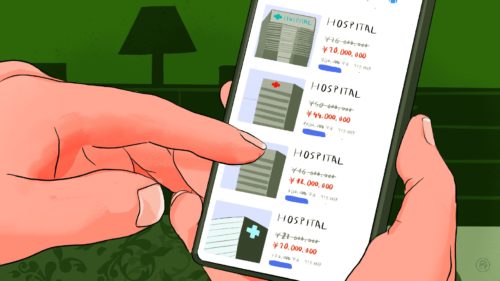Internet hospitals: A great idea that’s not working
China’s new "internet hospitals" are based on the promising idea of utilizing the power of the internet for medical care, but they have been incapable of being much more than online pharmacies.

On May 9, the National Medical Products Administration issued draft revisions of the Drug Administration Law — which was first implemented in 2019 — to elicit public feedback. On June 22, one particular article (no. 83) in the draft revisions, which states that third-party platforms would not be permitted to participate directly in online drug sales, suddenly elicited heated debate on social media platform Weibo, which then caused the stock prices of domestic medical internet companies, or “internet hospitals,” to plummet:
- On June 23, the stock price of Ali Health 阿里健康, Alibaba’s 阿里巴巴集团 online sales platform for pharmaceutical products and medical services, dropped by 13.85%.
While the exact implications of Article 83 (and how “direct participation” will be interpreted) remain to be seen, it has given a big fright to the companies in the emerging field of online medical care.
- According to a recent report, by the end of 2021, there were more than 1,700 companies providing internet medical services in China.
- A potential ban of direct sales of pharmaceutical products by third-party platforms could be fatal to Ali Health and all of China’s internet medical service providers: Ali Health has consistently depended on online drug sales for almost 90% of its total revenues.
In September 2020, Ali Health changed the name of its app to Yīlù 医鹿 (“medical deer”) in an attempt to place greater emphasis on medical services.
- But according to the company’s 2022 fiscal year financial report, released in May this year, revenue from its online healthcare services business was still only 3.26% of total revenues.
- The company’s pharmaceutical business reported revenues of 17.91 billion yuan ($2.67 billion), accounting for 87% of total revenues.
Ali Health’s inability to establish a working revenue model is indicative of the failure of China’s internet hospitals to transcend their role as online pharmacies, depending on pharmaceutical ecommerce (with high marketing costs and low profit margins) for the bulk of their revenues.
The context
Around 2014, when Ali Health was first listed on the Hong Kong Stock Exchange, the phenomenon of providing medical treatment and diagnosis via the internet was suddenly a very viable option, and money started flowing into startups, such as Good Doctor Online 好大夫在线, where users can select their own doctor. In China, as elsewhere, people have always preferred to receive treatment in large hospitals with specialist healthcare:
- In 2016, for example, 2,232 tertiary hospitals (or 7.7% of all Chinese hospitals) received 49.8% of all hospital visits.
So it seemed that the time for internet hospitals had arrived: Online medical care and artificial intelligence (AI) technology would be able to supplement and optimize the traditional medical system. By 2019, however, the proportion of treatment provided via the internet still accounted for only 1% of all medical treatment in China. In 2020, the arrival of the COVID-19 pandemic elevated online medical treatment to the peak of expectations, and prompted further moves in the capital market, for example:
- JD Health 京东健康, JD.com’s 京东集团京 sales platform for pharmaceutical products and online medical treatment, went public in 2020.
- Baidu partnered with Ping An Good Doctor 平安健康医疗, a platform for online consultations, hospital referrals, and medical services.
- Tencent invested in DXY.cn 丁香园, an online community for physicians, healthcare professionals, and pharmacies.
Yet internet hospitals have failed to take off in China, and the stock performance of JD Health, Ping An Good Doctor, and Ali Health have all been decidedly lackluster over the last few years. Since its listing in 2014, apart from 2021, Ali Health has consistently failed to make a profit, and its 2022 fiscal year results reported a net loss of 394 million yuan ($58.79 million).
Although regulation of internet hospitals has tightened substantially since 2020, with new policies and standards being issued regularly, so far it has proved impossible to integrate the highly regulated medical industry with the new internet medical services sector, where chaos often still reigns:
- Some reports have identified a wide range of treatments and prescribed drugs in internet hospitals, and even random prescriptions that have been formulated by artificial intelligence (AI), although the use of AI in this regard has been strictly forbidden in regulations recently issued by the National Health Commission.
A fundamental problem holding back internet hospitals is insurance (or the lack of it): In general, internet hospitals cannot provide medical insurance reimbursements because there is no coherent system or standard as of yet. Hence, patients are unable or unwilling to pay for online services, and a large revenue stream is still out of bounds for internet hospitals, leaving them relying on drug sales.
Ultimately, although internet hospitals have achieved some success in integrating online and offline medical care, online medical services in China have failed to bridge the digital divide, and patients are still overwhelmingly preferring to make use of traditional hospitals.
The takeaway
Medical treatment services via the internet was (and remains) a great idea, but its implementation has proved unsuccessful so far as internet hospitals have found themselves in a revenue cul-de-sac, unable to transcend the confines of simply being online pharmacies.






